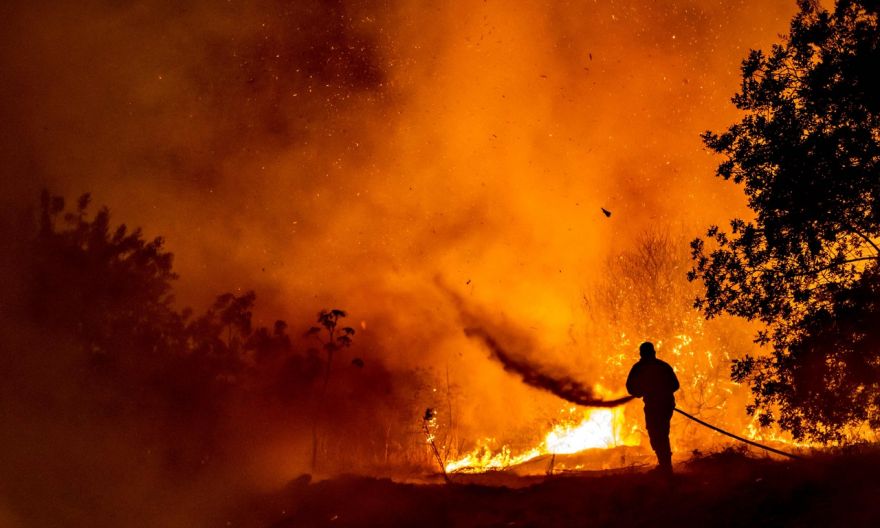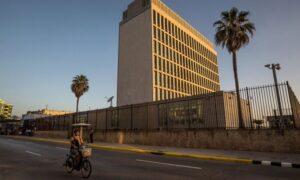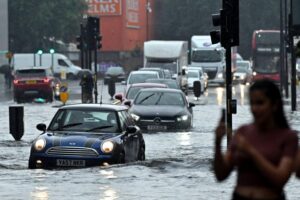Climate change is speeding up, key warming threshold set to be breached by 2030s: IPCC report

SINGAPORE – Climate change is widespread, rapid and intensifying with some impacts, such as sea level rise, now irreversible over hundreds to thousands of years, the United Nations’ top climate science body said in a major report released on Monday (Aug 9).
The report by the Intergovernmental Panel on Climate Change (IPCC) comes after a stunning series of extreme heatwaves, wildfires, floods and storms in the Northern Hemisphere, which are a taste of what is likely to come as the planet heats up and sea level rise accelerates with ice caps melting.
“It is unequivocal that human influence has warmed the atmosphere, ocean and land,” the report says.
“The scale of recent changes across the climate system as a whole and the present state of many aspects of the climate system are unprecedented over many centuries to many thousands of years.”
The report by the IPCC’s Working Group 1 (WG1) represents the work of 234 authors from 66 nations, including Singapore. It analyses the latest developments in climate science, computer climate models and eight years of data on extreme weather since the last WG1 report was published in 2013.
The report is designed to be a guide for climate action by governments.
The message is clear: Deep cuts in greenhouse gas emissions must be made in the coming decades, to reach net-zero emissions by around 2050 and negative carbon dioxide (CO2) emissions after that.
It is already too late to avoid an increase in extremes. What matters now is trying to limit the pace of global warming and the intensity of those extremes.
The more aggressive the switch to a green, low-carbon economy, the safer the future will be.
Yet no matter what happens, it is likely the world will still breach global average warming of 1.5 deg C above pre-industrial levels initially, a threshold the IPCC says risks triggering more extreme weather that threatens human health, crops and key ecosystems such as forests and coral reefs.
That is because so much CO2, methane and other greenhouse gases have already been pumped into the atmosphere that the world will continue to warm for some time even if pollution stops tomorrow.
‘Code red’
The world has already warmed 1.1 deg C since pre-industrial times. With emissions set to exceed 1.5 deg C in the 2030s, scientists say even more dangerous warming of 2 deg C would soon follow if action to slash emissions is not taken now.
“Today’s IPCC Working Group 1 Report is a code red for humanity,” UN Secretary-General Antonio Guterres said in a statement.
“The alarm bells are deafening, and the evidence is irrefutable: Greenhouse gas emissions from fossil fuel burning and deforestation are choking our planet and putting billions of people at immediate risk.”
He added: “The internationally agreed threshold of 1.5 deg C is perilously close.” He was referring to the 2015 Paris Climate Agreement goals of limiting warming to well below 2 deg C and to aim for 1.5 deg C.
Ms Inger Andersen, executive director of the UN Environment Programme, said: “Climate change is a problem that is here now. Nobody’s safe and it is getting worse faster. We must treat climate change as an immediate threat. “
“It’s time to get serious because every tonne of CO2 emissions adds to global warming,” she told a press conference during Monday’s release of the report.
Singapore Management University climate scientist Winston Chow said: “The impacts are already bad at 1.1 deg C of warming. I don’t want to feel the impacts at 1.5 deg C, thank you very much.”
The heatwave that baked the western United States and Canada in June, for instance, had been “virtually impossible” without the influence of climate change, scientists have said.
In the latest report, the IPCC said that for 1.5 deg C of global warming, there will be increasing heatwaves, longer warm seasons and shorter cold seasons. At 2 deg C of warming, heat extremes would more often reach critical tolerance thresholds for agriculture and human health.
Still time to act
“With every additional amount of global warming we will see greater changes in the climate. Every half degree of warming will cause increases in the intensity and frequency of hot extremes, heavy precipitation and drought,” Dr Valerie Masson-Delmotte, Co-Chair of Working Group I, told the press conference.
“The climate we experience in the future depends on our decisions now,” she added, a view shared by Ms Andersen.
She said the report “projects these scenarios outward and tells us if we do not take action, what could be the potential outcomes. Or, if we do take action, what will be a very good outcome. So the power is in our hands at this point.”
The IPCC report and a much shorter summary for policymakers was approved by nearly 200 nations during a two-week virtual gathering that ended last Friday. It is the first of three instalments for next year’s IPCC Sixth Assessment Report on climate change – the first was in 1990 – that governments, businesses, scientists and others will use as a reference to plan for the future.
The findings are also likely to add pressure on the UN’s COP26 climate conference in November in Scotland to deliver bolder outcomes.
The UN is urging nations to pledge deeper emissions cuts, more climate finance for poorer countries and a rapid phasing out of coal, the most polluting fossil fuel. At present, national climate plans put the world on a path to warm about 3 deg C by 2100, the UN says.
“We know what must be done to limit global warming – consign coal to history and shift to clean energy sources, protect nature and provide climate finance for countries on the frontline,” British Prime Minister Boris Johnson said.
Future impacts
The report projects changes to the climate will increase in all regions in the coming decades.
For example, rainfall patterns will shift, with more rain in the higher latitudes while tropical regions will also be wetter, with longer dry periods broken by short, intense bursts of rain.
Global mean sea level rise will speed up in the coming decades under high-emission scenarios, possibly reaching a 1m rise since the start of the 20th century. That presents a growing threat to low-lying island nations such as Singapore and coastal megacities around the globe, especially as sea level rise will continue.
By 2300, sea levels could rise by nearly 7m and an increase of 15m cannot be ruled out, the report says, pointing to the small risk of rapid disintegration of polar ice sheets.
Also concerning, as CO2 emissions rise, the natural systems in the ocean and on land, such as forests, that soak up a lot of excess CO2 are projected to be less effective at slowing the accumulation of CO2 in the atmosphere.
For decades, about half of the CO2 that human activities have emitted has been taken up by trees, grasslands, soils and oceans.
But large-scale deforestation, droughts and hotter weather are turning forests into huge sources of CO2. Droughts and heat also threaten soils and crops, while marine heatwaves, acidification and de-oxygenation are threatening the world’s oceans and sea life that hundreds of millions of people rely on for livelihoods.
Professor Benjamin Horton, director of the Nanyang Technological University’s Earth Observatory of Singapore who was involved in the latest report, said the IPCC tends to err on the side of caution, by providing conservative estimates of climate change and sea-level rise.
But there is still the possibility of less likely, but more severe outcomes of unabated climate change.
Prof Horton, an expert on sea level science, said: “I hope the fires, floods and extreme weather seen around the world in recent months will alert the public to the variability of a 1 deg C of warming.
“Imagine the scale of this destruction with 2 or 3, or even 4 or 5 deg C of warming, which is predicted by the IPCC if mitigations are not introduced.”




